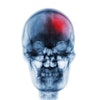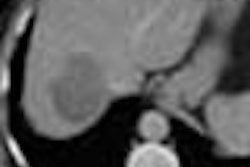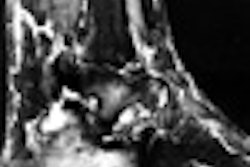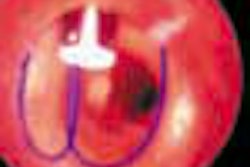SAN ANTONIO -- Being an interventional radiologist can be a pain in the neck -- as well as a pain in the back, according to a presentation at the 26th annual scientific meeting of the Society of Cardiovascular and Interventional Radiology (SCVIR).
That's because doctors who wear lead shielding garments are constantly twisting and turning their head and trunk into abnormal positions as they follow progress of catheters and guide wires through blood vessel on monitors. Even when the monitors are placed in ergonomically correct positions, many doctors report that they still need medication to treat pain associated with their work, and some doctors even say the pain has been intense enough to force them to miss work.
"The incidence of neck and back pain in this self-selected group justifies a validated study to establish the true incidence and possible workplace-related factors amongst interventional radiologists," said Dr. Lindsay Machan, an associate professor of radiology at the University of British Columbia, in Vancouver, Canada.
Machan used the Internet to ask fellow SCVIR members about their frequency of neck and back pain. Of the nearly 1,000 radiologists who might have participated, 308 doctors responded to the on-line survey. In a report presented at the meeting, Machan said that because interventional radiologists spend so much time dealing with ionizing radiation, they tend to wear heavy shielding that can have detrimental effects on posture.
Machan said that the survey found that doctors wore shielding 49% of the time they were working. He said there were some respondents who said they wore lead all the time. When questioned about their experience with pain, about 40% of the doctors claimed they never had neck pain, but about 49% percent said they sometimes had neck pain related to work; Eleven percent of the doctors reported frequent neck pain.
The pain was severe enough for 5.3% of the physicians to take time off from work, and 29% of the doctors treated themselves with pain killers because of neck pain. When questioned about back pain, 15.9% of the doctors denied they had any pain; 73% complained of some back pain, and 11% said pain was frequent. About 2.7% of the doctors said they required time off to deal with severe back pain; Eleven percent took analgesics or other treatment for their pain.
Machan considered placement of fluoroscopy monitors as a possible reason for strain that would cause neck and back pain. However, Dr. James Spies, vice chairman of the department of radiology at Georgetown University in Washington, DC, suggested that doctors wearing lead shielding may be exacerbating back and neck problems when they lean forward to operate levers while they are standing.
By Edward Susman
AuntMinnie.com contributing writer
March 6, 2001
Click here to post your comments about this story. Please include the headline of the article in your message.
Copyright © 2001 AuntMinnie.com



















